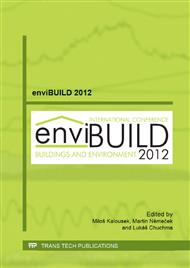p.85
p.89
p.93
p.97
p.101
p.105
p.109
p.113
p.117
Perceived Loudness of Sound Transmitted through Light Weight and Heavy Weight Walls
Abstract:
When assessing the sound insulation quality of buildings constructions, policy makers and investors typically demand for single number ratings and sound insulation classes that allow for easy ranking of building products. Converting the full frequency content of a precisely measured or calculated structure into a single number, which takes into account all aspects of the insulation performance in a balanced way, is a challenging task. The recently proposed draft standard 717 proposes to take into account also frequencies below 100 Hz. This makes the single value rating even more complicated, since the transmission spectra R (dB) of walls can be qualitatively very different above and below 100 Hz, and even more, since, particularly at low frequencies, human hearing depends not only on frequency but also on the absolute sound level. This article presents a comparison between masonry and light-weight walls with different R value, in terms of the perception of loudness of typical living room, traffic noise and machinery noise transmitted through the walls. The effect of temporal and spectral features of the presented stimuli on loudness perception is analyzed.
Info:
Periodical:
Pages:
101-104
Citation:
Online since:
January 2013
Price:
Сopyright:
© 2013 Trans Tech Publications Ltd. All Rights Reserved
Share:
Citation:


